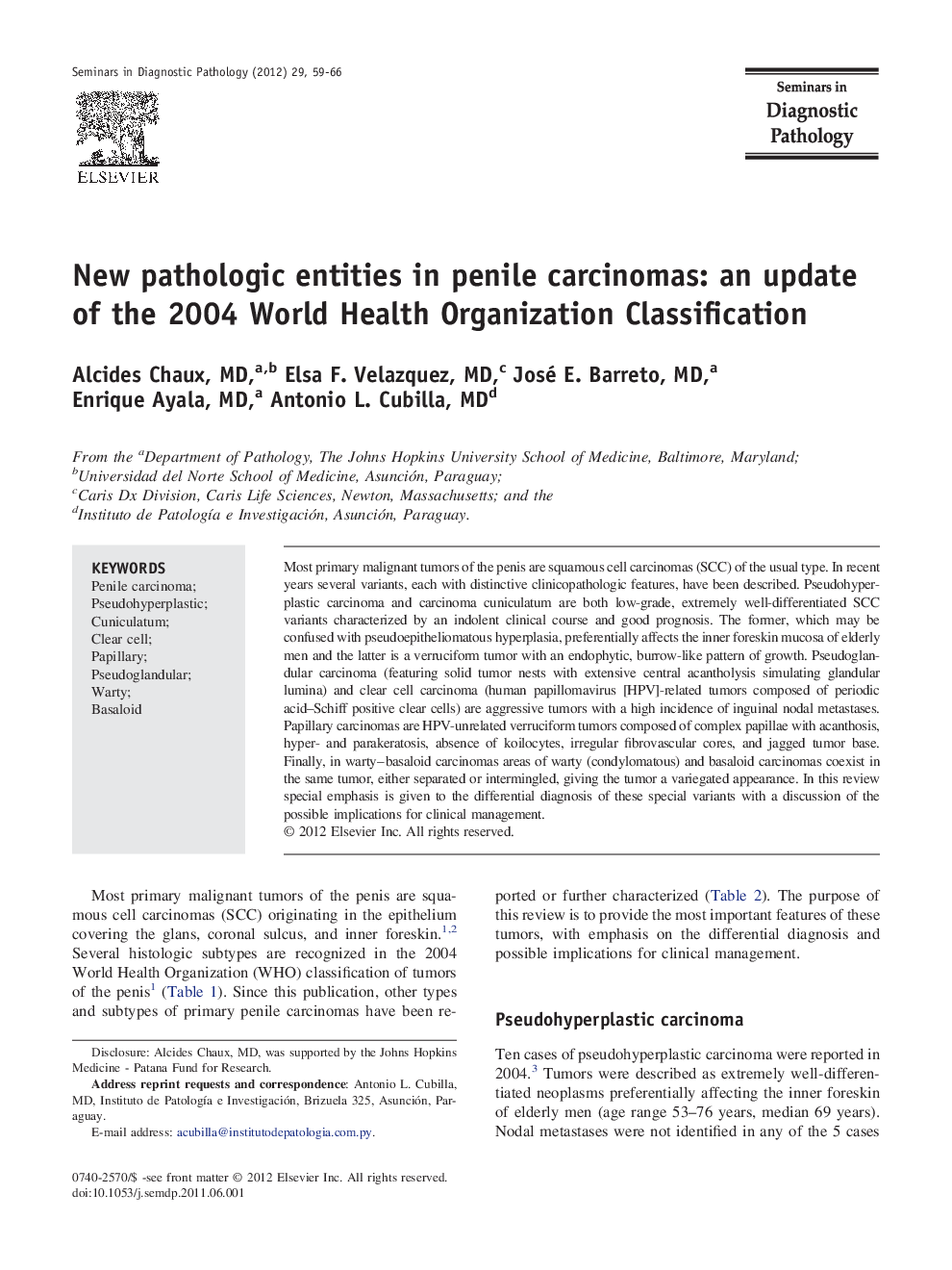| کد مقاله | کد نشریه | سال انتشار | مقاله انگلیسی | نسخه تمام متن |
|---|---|---|---|---|
| 4138442 | 1272148 | 2012 | 8 صفحه PDF | دانلود رایگان |

Most primary malignant tumors of the penis are squamous cell carcinomas (SCC) of the usual type. In recent years several variants, each with distinctive clinicopathologic features, have been described. Pseudohyperplastic carcinoma and carcinoma cuniculatum are both low-grade, extremely well-differentiated SCC variants characterized by an indolent clinical course and good prognosis. The former, which may be confused with pseudoepitheliomatous hyperplasia, preferentially affects the inner foreskin mucosa of elderly men and the latter is a verruciform tumor with an endophytic, burrow-like pattern of growth. Pseudoglandular carcinoma (featuring solid tumor nests with extensive central acantholysis simulating glandular lumina) and clear cell carcinoma (human papillomavirus [HPV]-related tumors composed of periodic acid–Schiff positive clear cells) are aggressive tumors with a high incidence of inguinal nodal metastases. Papillary carcinomas are HPV-unrelated verruciform tumors composed of complex papillae with acanthosis, hyper- and parakeratosis, absence of koilocytes, irregular fibrovascular cores, and jagged tumor base. Finally, in warty–basaloid carcinomas areas of warty (condylomatous) and basaloid carcinomas coexist in the same tumor, either separated or intermingled, giving the tumor a variegated appearance. In this review special emphasis is given to the differential diagnosis of these special variants with a discussion of the possible implications for clinical management.
Journal: Seminars in Diagnostic Pathology - Volume 29, Issue 2, May 2012, Pages 59–66